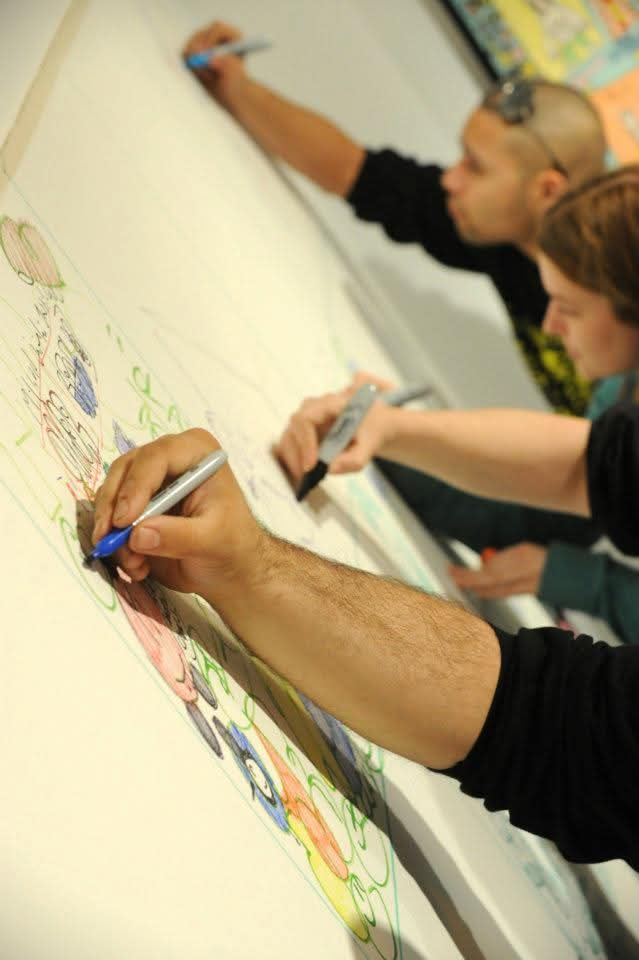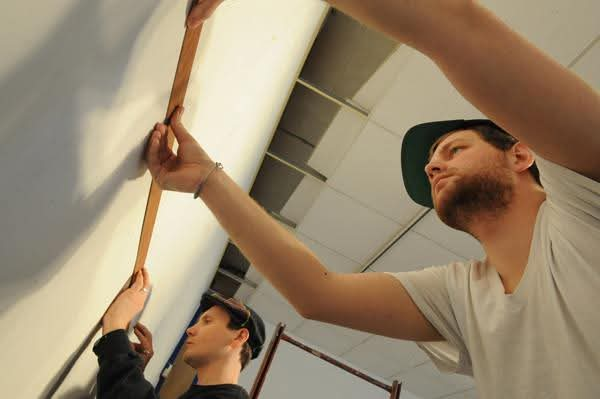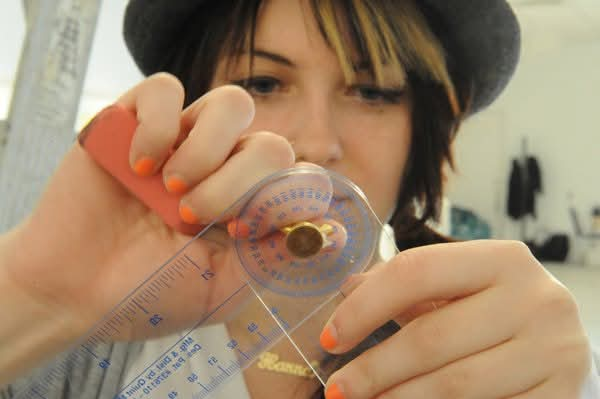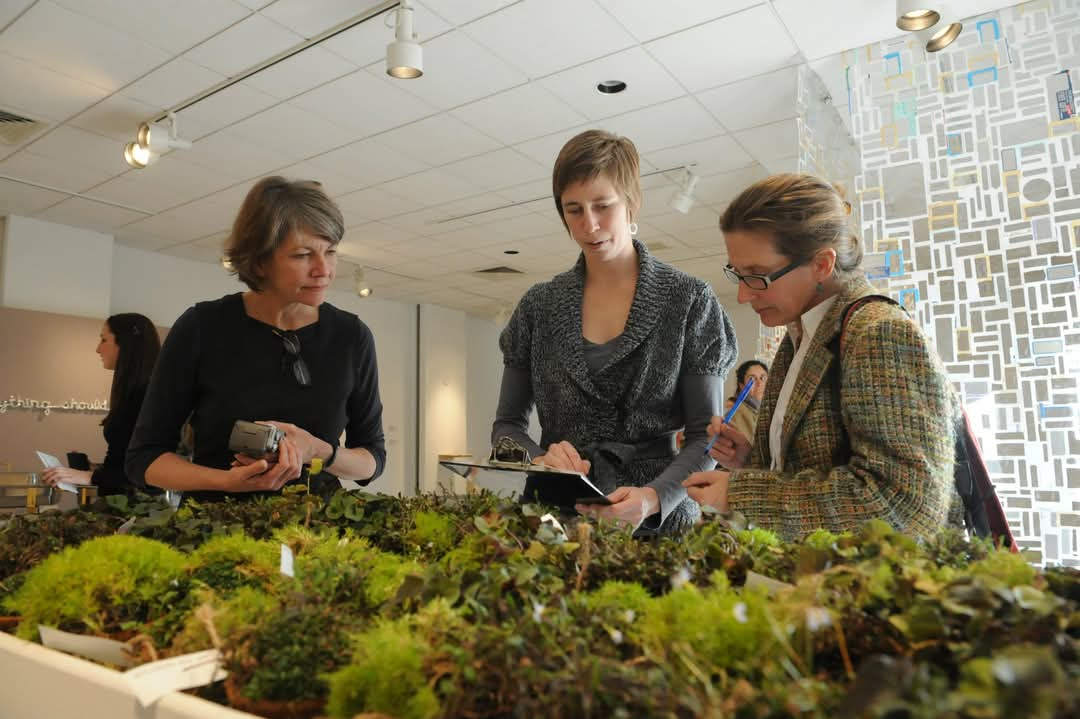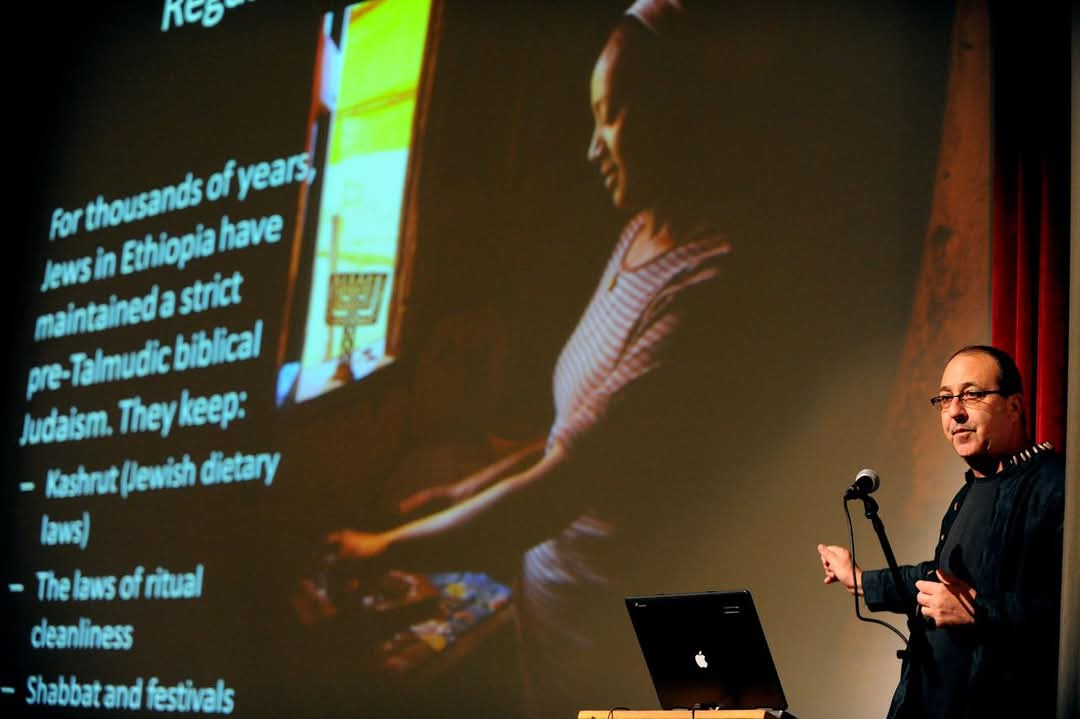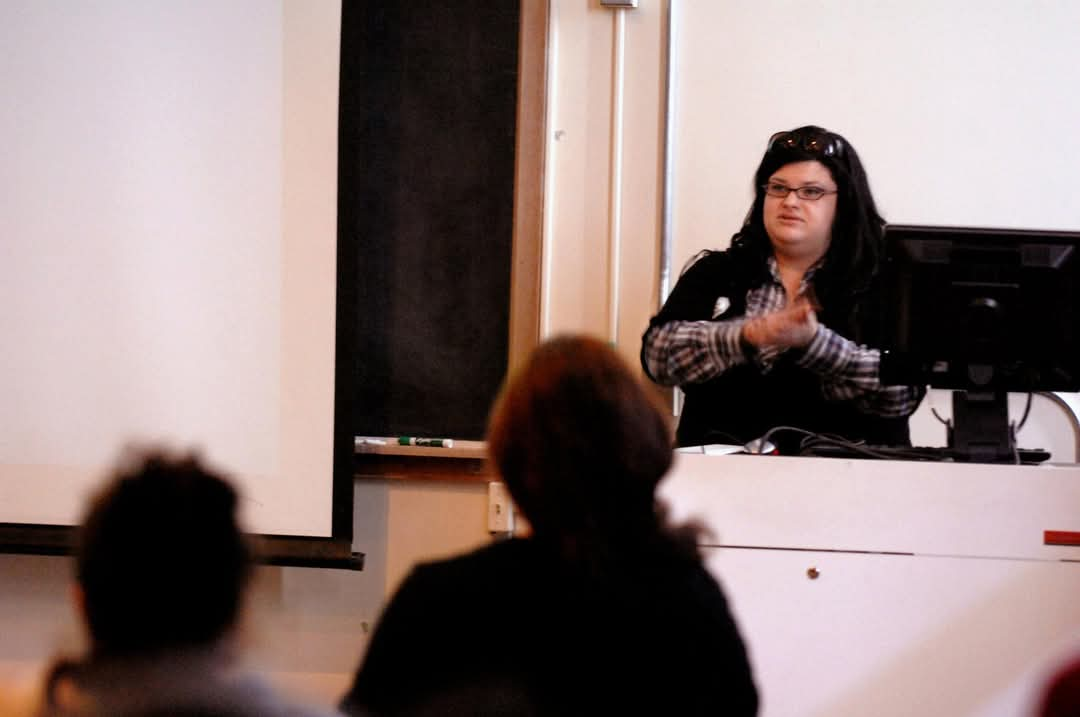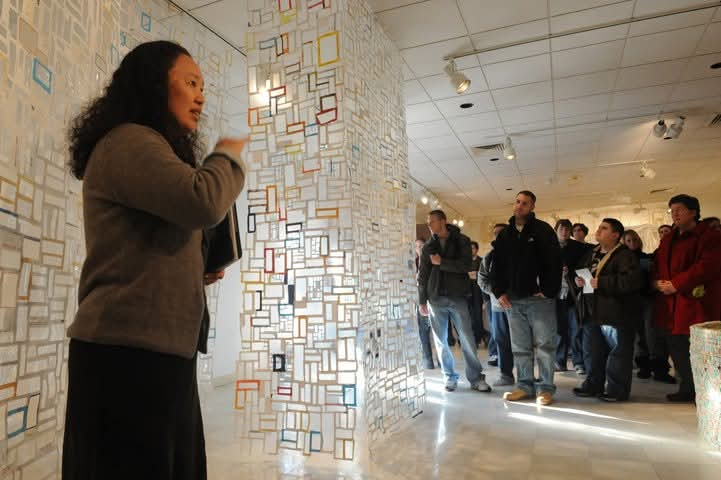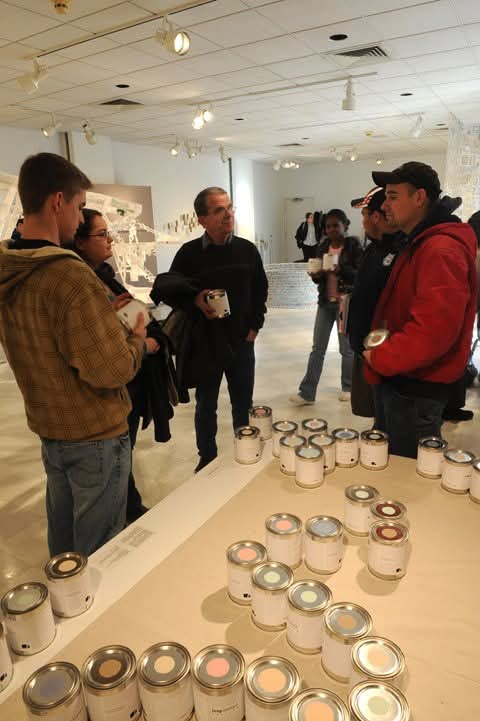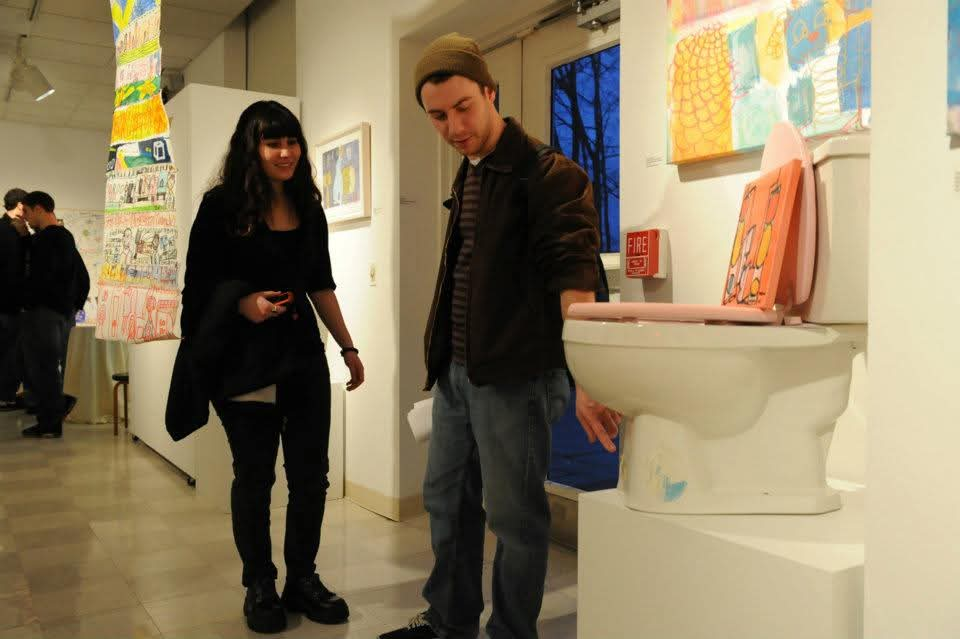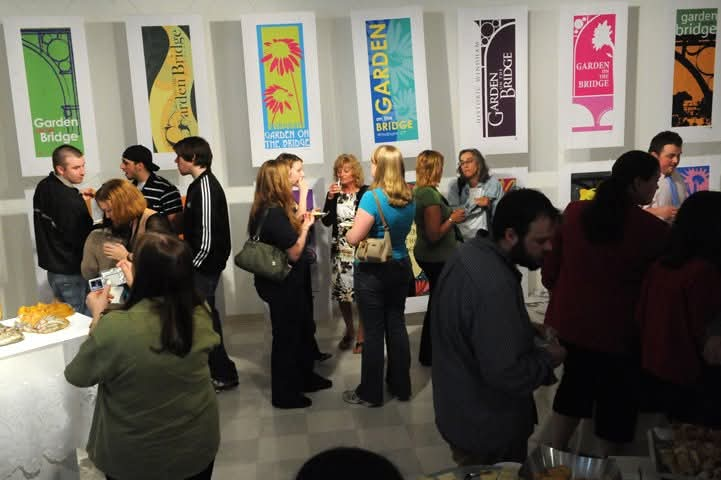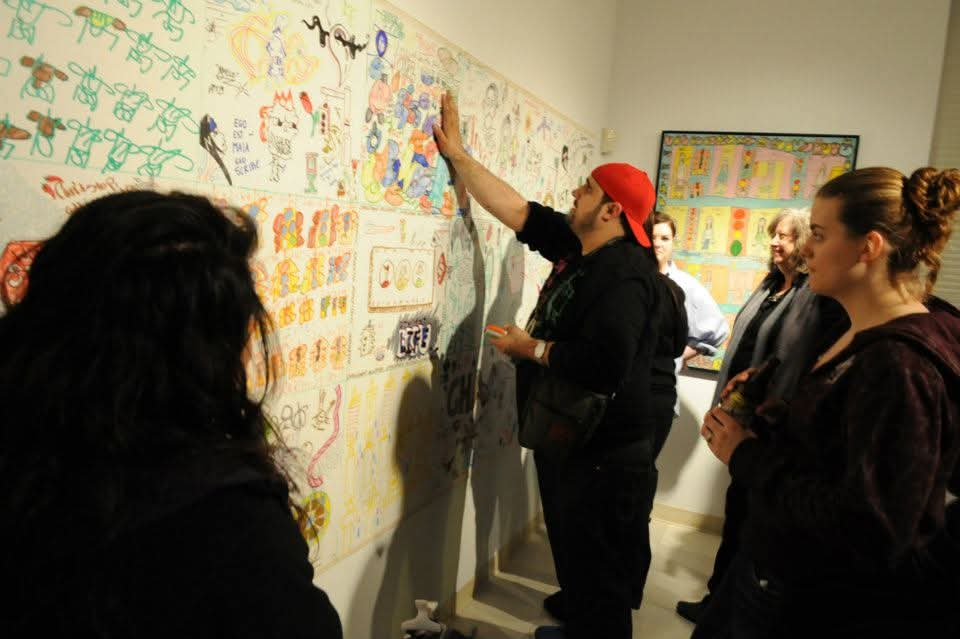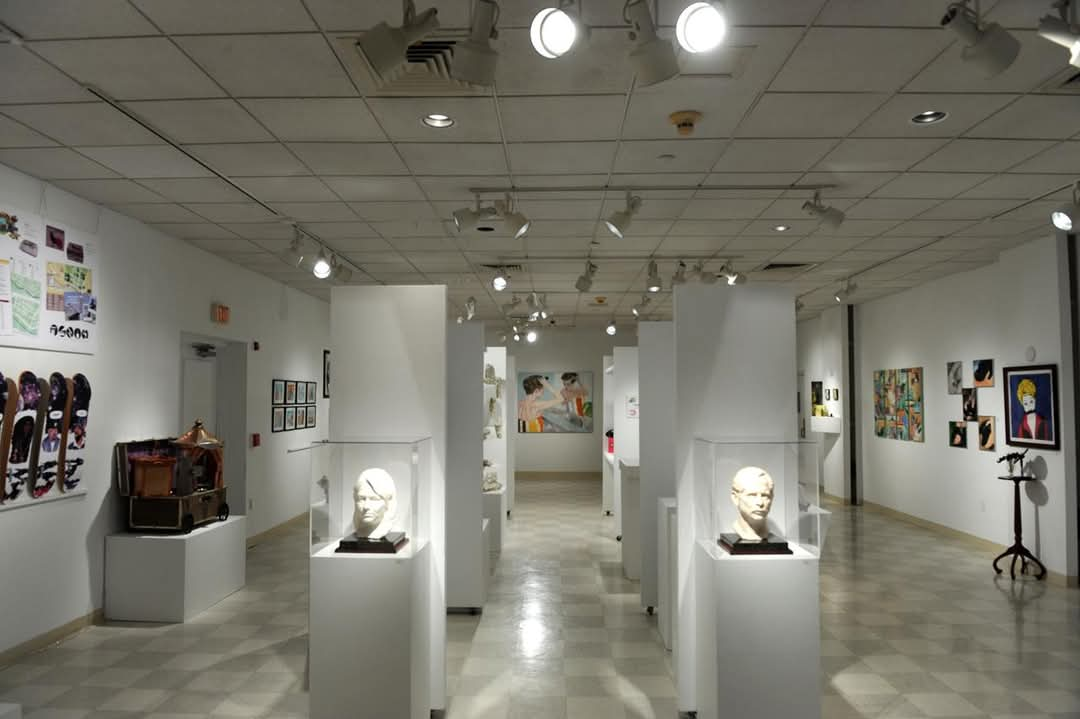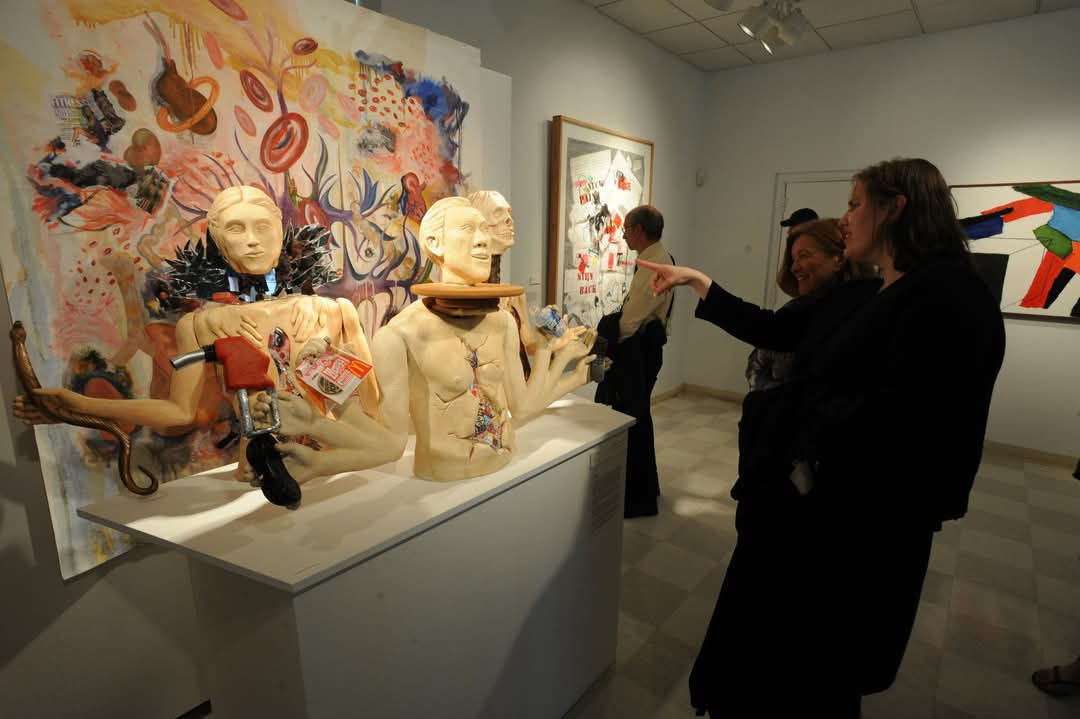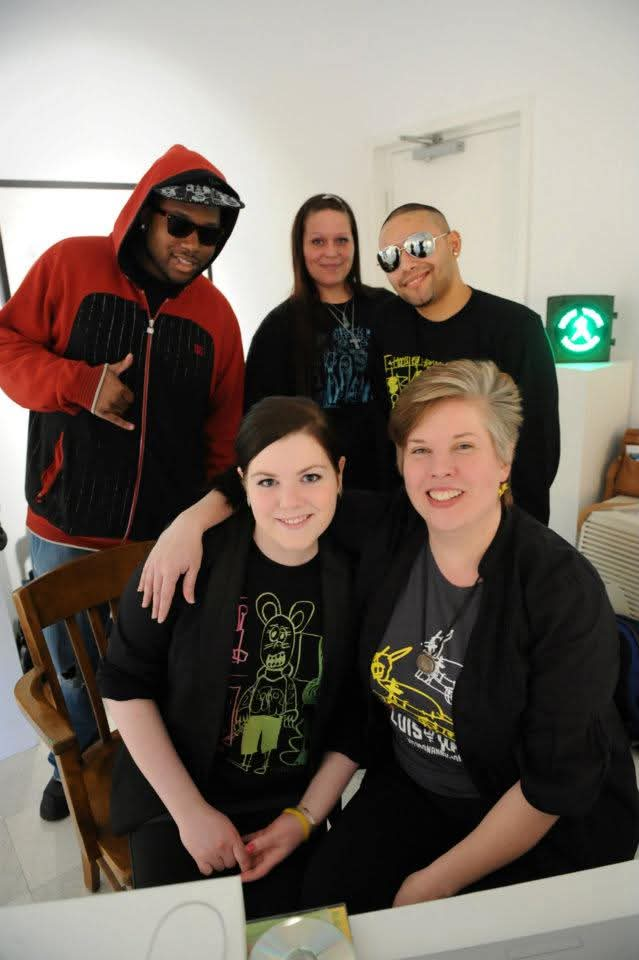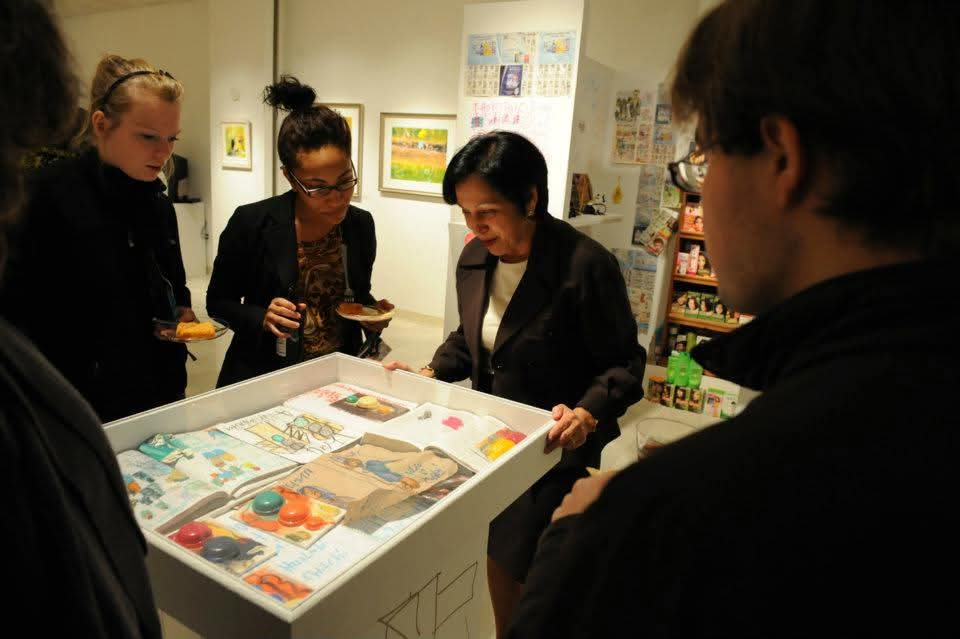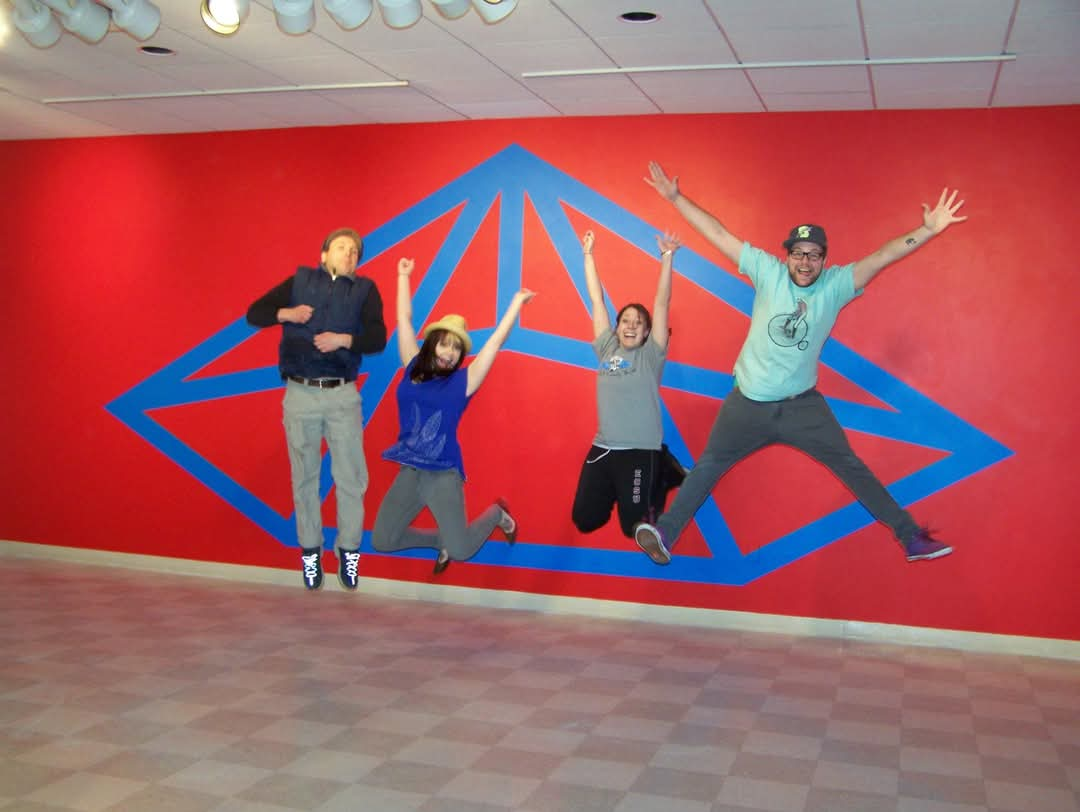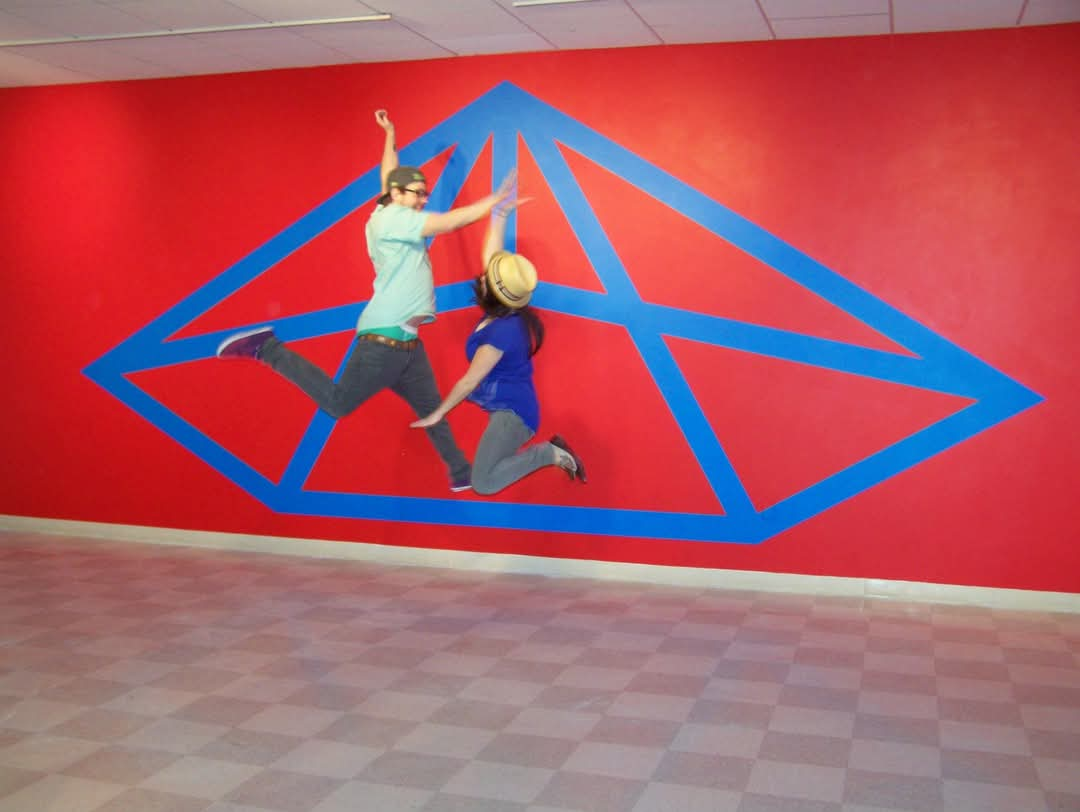- Apply
- Visit
- Request Info
- Give
Julian Akus
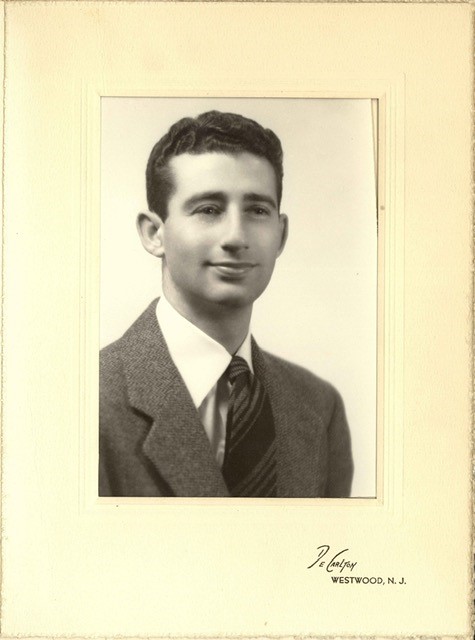 Julian Akus (April 30, 1921 – February 21, 1981) was a distinguished artist and educator whose legacy continues to inspire. A devoted member of the university's faculty for nearly three decades, Akus began his tenure in 1952 as Assistant Professor of Art and later served as the Department Chair of the Art Program. He worked with unwavering dedication until his passing in 1981, leaving an indelible mark on the college and the greater art community.
Julian Akus (April 30, 1921 – February 21, 1981) was a distinguished artist and educator whose legacy continues to inspire. A devoted member of the university's faculty for nearly three decades, Akus began his tenure in 1952 as Assistant Professor of Art and later served as the Department Chair of the Art Program. He worked with unwavering dedication until his passing in 1981, leaving an indelible mark on the college and the greater art community.
Akus’s education took him from Indiana and Columbia Universities to the American University in Shrivenham, England, and across Europe. His work was widely exhibited in New England and New York, with notable showings at the Providence and Boston Art Festivals, as well as exhibitions in Fall River, MA, and Purchase, NY. His early artwork reflected a keen interest in cubism, but over time, he transitioned toward abstract expressionism and pop art, responding to the cultural and political shifts of his era. Music, particularly jazz and classical music, played a crucial role in shaping his visual art, which often resonated with the themes of social justice, religion, and human emotion.
Akus’s teaching was rooted in his deep love for education and art history. He taught courses in art appreciation, history, and hands-on media like painting, drawing, and clay, fostering an environment where students were encouraged to explore diverse artistic practices. His courses on ancient cultures, including Mesopotamia, Greece, and Egypt, were infused with his enthusiasm for art history. He created a space for students to experiment and learn through performance and media—teaching not just technique but the very act of creation itself.
His own studio, located above a hardware store in the heart of Willimantic, reflected his deep connection to the town’s vibrant, industrial atmosphere in the late 1950s. This space, where Akus painted large oil works and experimented with materials, was a sanctuary for his creativity. Over the years, his paintings evolved from the bold lines of cubism to the softer, more fluid forms of abstract expressionism, incorporating acrylics and often drawing upon his Jewish heritage and religious themes.
Akus was not just a teacher in the classroom but also an active member of the community. He was involved in high school musicals, creating set designs and working with students on puppet shows, often encouraging them to craft their own puppets. Music, too, played a prominent role in his life, and he infused his work with the rhythms of jazz and classical music. These experiences reflected his belief in the power of art to engage and unite people from different backgrounds and cultures.
Beyond his professional life, Akus was a loving family man. He often brought his son into his art room, where they would work together, sharing in the creative process. His deep connections within the art world also extended to his personal life—he introduced his son to his future wife, one of his students at the college.
Born in the New York area and shaped by the Great Depression and the political movements of the 1930s, Akus’s worldview was further influenced by his service in World War II, where he fought in North Africa, England, and Sicily. His experiences during the war and the social turbulence of the post-war period shaped his art and his unwavering commitment to social justice, which permeated both his work and teaching.
The Akus Gallery, named in his honor, served as a lasting tribute to his contributions as an artist and educator. The gallery was established with the goal of preserving and celebrating his legacy, showcasing his work and the work of others who embody the values he held dear. Early on, the gallery displayed his paintings alongside those of students in glass cases, creating a space where art and education intertwined. His contributions to the university were formally recognized, including an official seal from the Connecticut State Senate, further solidifying his place in the university’s history.
Julian Akus’s legacy lives on through his work, his teachings, and the gallery that bears his name. His art continues to resonate with the ideals of beauty, compassion, and social consciousness, inspiring future generations to engage with the world through both creativity and purpose.
Transcribed from the phone interview with Jan Akus, son of Julian, by Megan Starbird, Curatorial Assistant, Akus Gallery on 01/14/2025Elizabeth Peterson Jennings
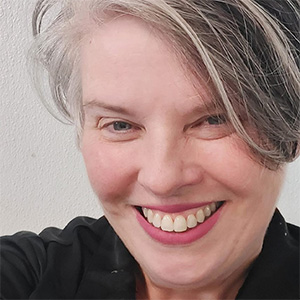 Elizabeth Peterson Jennings served as the director of Akus Art Gallery from 2008 to 2012. During her tenure, she curated over 20 original exhibitions, fostered student engagement, and expanded our permanent collection.
Elizabeth Peterson Jennings served as the director of Akus Art Gallery from 2008 to 2012. During her tenure, she curated over 20 original exhibitions, fostered student engagement, and expanded our permanent collection.
Peterson Jennings' journey to becoming an academic museum director started as an assistant to a deputy director at the Museum of Modern Art in New York, where she spent seven years gaining invaluable behind-the-scenes experience in museum operations. It was at MoMA that she gained an overview of exhibition design and production, budget management, registrar, security, and conservation, as well as liaising to all of the curatorial departments. Her second museum position was with Dave and Reba Williams, who owned one of the largest privately held collections of American prints. The foundation was open only to the scholarly public by appointment, and after four years of work in collections care and development and facilitating a complete database migration and security overhaul for the Williams, Peterson Jennings realized she missed interacting with the general public and preferred to support museums that prioritized accessibility for all.
It was during her time at Eastern Connecticut State University that Peterson Jennings first started curating exhibitions regularly. “It was Eastern that allowed me to do that for the first time. Although I've initiated and curated over 35 or 40 original shows throughout my career, I still don't consider myself primarily a curator.”
Reflecting on her early experiences, she said, “I grew up in upstate New York. I went with my mom and dad to the Met when I was seven. I might have been there before, but this is the first time I remembered it. We were walking up from the parking area through the gallery with Greek terracotta vases and sculptures, and we got into the huge open lobby. I remember grabbing my dad's hand and saying, “You mean this museum has been here my entire life?” I just thought I'd reached nirvana.”
When she became the director of Akus Gallery, which was located in Shafer Hall, and the coordinator of gallery and museum services, Peterson Jennings found herself invigorated by the academic setting. She enjoyed interacting with students and faculty, forming close connections with art history and studio art professors. Lula Mae Blocton, Claudia Widdis, June Bisanz, Qimin Lu, Anne Dawson, Gail Gelburd, and Terry Lenox were among her good friends and colleagues. Peterson Jennings shared, “During a lunch with Anne Dawson, our conversation turned to Julian Alden Weir, an American Impressionist who lived in Windham in the 1890s and is buried in Willimantic. The two of us decided to find his grave. I remember tromping through the snow with Dawson to find Weir’s grave. Consequently, Dawson published the book 'Rare Light: J. Alden Weir in Windham, Connecticut, 1882-1919.'”
One of her key highlights was her first foray into teaching, thanks to the trust of faculty members like Gail Gelburd, who gave Peterson Jennings her first opportunity to teach the museum studies course which Gelburd had initiated some years prior.
The exhibition "Solemn & Sublime: Contemporary American Figurative Painting" in 2010 was a highlight. We had some really big-name artists here: Nelson Shanks,
Mel Leipzig, Sidney Goodman, Sharon Sprung, and Anne Harris are all remarkable artists known for their incredible painterly style. Additional highlights included the work of Sol LeWitt, Sidney Goodman, Janet Fish, and Jacob Lawrence, as well as the work of Haitian and Papua New Guinean artists and craftsmen.
On average, Akus Gallery presented six to eight exhibitions yearly, as well as the senior capstone exhibition with approximately 35 to 50 majors annually.
Jennings' happy place in museums and galleries is realizing other people's visions. She started with a collection of 130 objects and ended up with 1,300 by the time she left Willimantic, encouraged by President Elsa Nuñez.
After her tenure at ECSU, Peterson Jennings continued her museum leadership journey at Oglethorpe University in Georgia, where she has been for over 13 years. Oglethorpe provided a unique experience—despite being a smaller institution, it has a larger museum facility with multiple galleries and satellite spaces. “We spent much time here at Oglethorpe connecting the student body to the museum, starting an internship program, and a museum studies minor,” shares Peterson Jennings.
Currently pursuing a distance learning PhD in Museum Studies at the University of Leicester in the UK, Peterson Jennings is exploring how museum and gallery spaces impact student well-being and identity on college campuses. “I'm only a few months into refining my questions, writing, and thinking about it, and I love it,” shares Peterson Jennings. Passionate about bridging academic and practical experiences, she believes in the importance of hands-on learning in museum studies. Her advice to aspiring art historians and museum professionals is clear: theory must be paired with practice, and the arts should never be dismissed as impractical. Peterson Jennings' career exemplifies this philosophy, as she continues to inspire the next generation of museum professionals through her leadership and scholarship.


